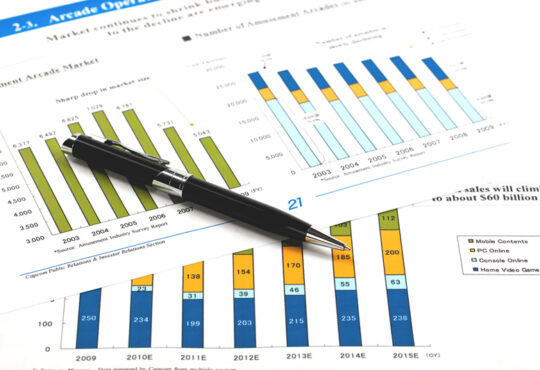
For decades, the US dollar has reigned supreme as the world’s dominant reserve currency, used for international trade, investment, and lending. The dollar’s dominance has been so pronounced that it has been referred to as the “exorbitant privilege” of the United States. However, as the world order changes and new economic powers rise, there has been increasing discussion about the possibility of a new reserve currency to replace the dollar. So, if not the dollar, then what?
There are a few potential contenders for the role of the next reserve currency. One of the most commonly mentioned is the euro, which is the second-largest reserve currency in the world after the dollar. The euro has several advantages as a potential reserve currency, including the fact that it is backed by a large and relatively stable economic bloc, the European Union. The euro is also widely traded and has a well-established financial infrastructure.
Another potential contender is the Chinese Yuan, which has been gaining traction in international markets in recent years. China has been working to internationalize the Yuan, and it has been included in the IMF’s basket of reserve currencies since 2016. The Yuan is already being used for international trade and investment, and China is working to establish its international financial infrastructure to support its use.
However, there are also significant challenges to both the euro and the Yuan becoming the world’s next reserve currency. In the case of the euro, the ongoing economic and political challenges facing the European Union raised questions about the currency’s stability and long-term prospects. The euro zone has struggled with issues such as high unemployment, low economic growth, and political instability, and there are concerns about the viability of the euro zone as a long-term economic bloc.
As for the Yuan, China’s authoritarian government and lack of transparency raise concerns about the currency’s reliability and trustworthiness. China’s use of currency manipulation and other economic policies to gain a competitive advantage also makes some observers wary of the Yuan’s potential as a reserve currency.
There are other potential contenders for the role of the next reserve currency as well. Some have suggested that a digital currency such as Bitcoin or a stablecoin could serve as a global reserve currency, as they are not tied to any particular government or central bank. However, the volatility and lack of widespread adoption of these currencies make them unlikely candidates in the near term.
So, if not the dollar, then what? Likely, there will not be a single currency that replaces the dollar, but rather a more diverse and multipolar system of reserve currencies. The IMF’s Special Drawing Rights (SDR) already serves as a sort of “reserve currency of last resort,” and there has been discussion about expanding the use of SDRs to support global trade and investment.
Another potential solution is for countries to diversify their reserves and hold a mix of different currencies, rather than relying solely on the dollar. This approach would help reduce the risk of currency fluctuations and provide greater stability for the global financial system.
In addition to these potential contenders, there are other factors to consider when discussing the future of the reserve currency system. One of these factors is the role of the United States in the global economy. While the US is no longer the sole superpower, it remains a major economic and military force, and the dollar’s dominance is inextricably linked to US power and influence.
Another factor to consider is the increasing use of alternative payment systems, such as digital currencies and blockchain technology. These systems have the potential to disrupt traditional financial systems and could impact the role of reserve currencies in the global economy.
Ultimately, the question of which currency will replace the dollar as the world’s dominant reserve currency is a complex one with no easy answer. However, it is clear that the world is changing, and the current reserve currency system may not be sustainable in the long term. As such, policymakers and economists need to continue to explore potential solutions and alternatives to the current system.
It is important to recognize that any changes to the current reserve currency system will not occur overnight, and will require significant cooperation and coordination between countries. Political, economic, and social factors will all play a role in determining the success of any potential alternatives to the dollar. As such, policymakers and economists must work together to develop a comprehensive and inclusive approach to addressing the challenges and opportunities presented by the changing global order.
In addition, any new reserve currency system must be designed to promote greater financial stability and economic growth, while also addressing the concerns and needs of all stakeholders. This will require a careful balancing of competing interests and priorities, as well as a willingness to engage in constructive dialogue and collaboration across borders and sectors.
Ultimately, the future of the reserve currency system will be shaped by a range of factors, including economic trends, geopolitical developments, and technological innovations. By remaining vigilant and proactive, and by working together to identify and address potential risks and opportunities, we can help to ensure a more stable, sustainable, and prosperous global financial system for generations to come.
One potential solution that has been suggested is the use of a global reserve currency issued by a multilateral institution, such as the IMF. This currency would be backed by a basket of currencies from different countries and would be used for international trade and investment. This approach would reduce the dominance of any one country or currency in the global financial system and could provide greater stability.
However, this approach would require significant cooperation and coordination between countries and could face significant political and economic obstacles. It is unclear whether such a system is feasible or desirable in the current geopolitical climate.
Another potential solution is the development of regional reserve currencies, such as an African currency or a Latin American currency. These currencies would be used within their respective regions for trade and investment and could provide greater stability and economic integration within those regions. However, the success of such an approach would depend on the political and economic stability of the regions in question.
In conclusion, the question of which currency will replace the dollar as the world’s dominant reserve currency is a pressing one that requires careful consideration and analysis. The global financial system is complex and interdependent, and any changes to the current reserve currency system could have far-reaching consequences for the global economy.
While there are potential alternatives to the dollar, such as the euro, the Yuan, or a global reserve currency issued by a multilateral institution, it is unlikely that any one currency will fully replace the dollar shortly. Rather, the future of the reserve currency system is likely to be more diverse and multipolar, with a range of currencies playing a role in international trade and investment.
As the global economy continues to evolve and shift, policymakers and economists must remain vigilant and proactive in exploring potential solutions and alternatives to the current system. By working together and engaging in constructive dialogue, we can ensure the stability and sustainability of the global financial system, and promote greater economic prosperity and cooperation across the world.






